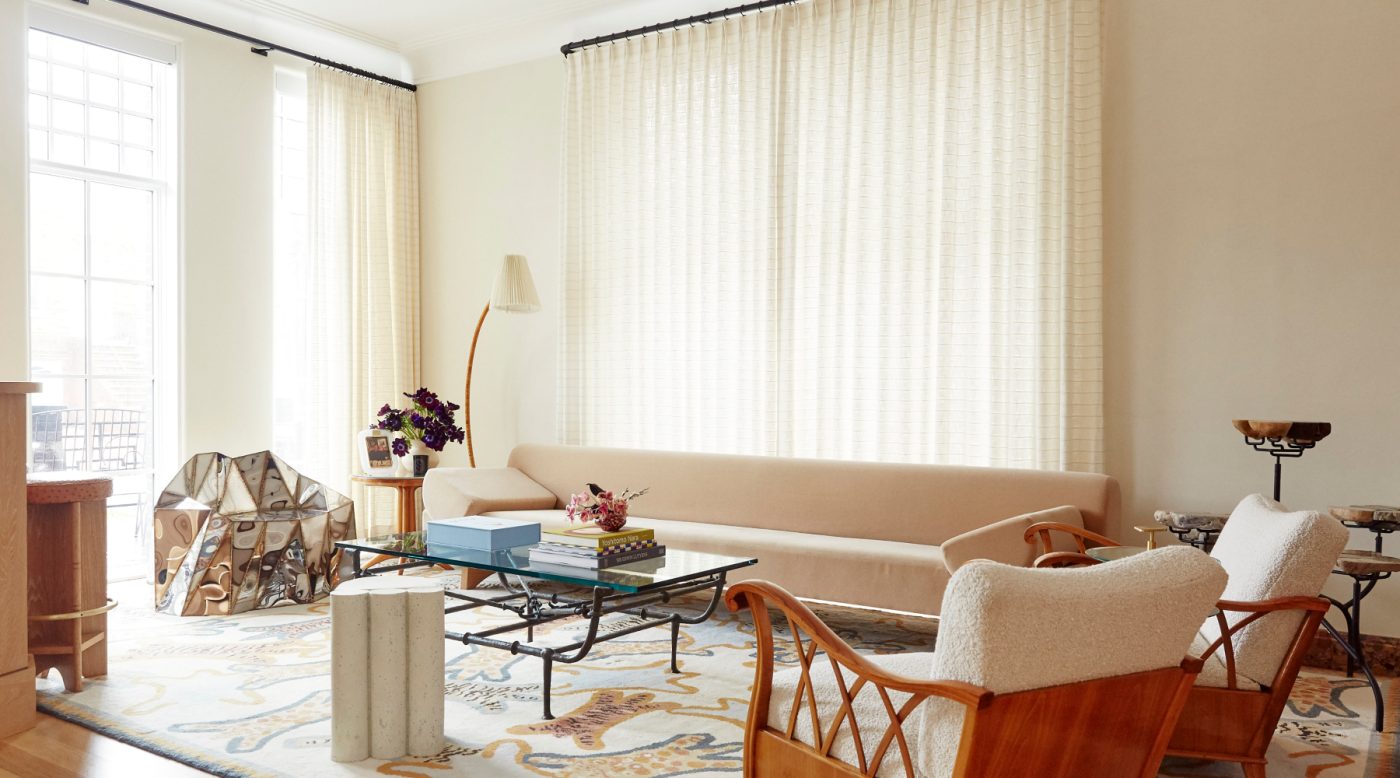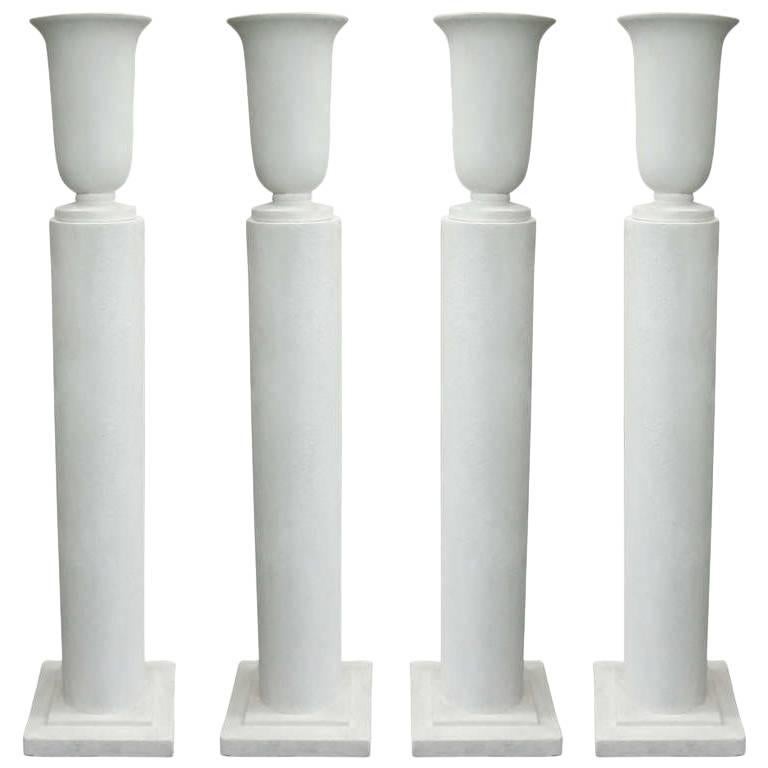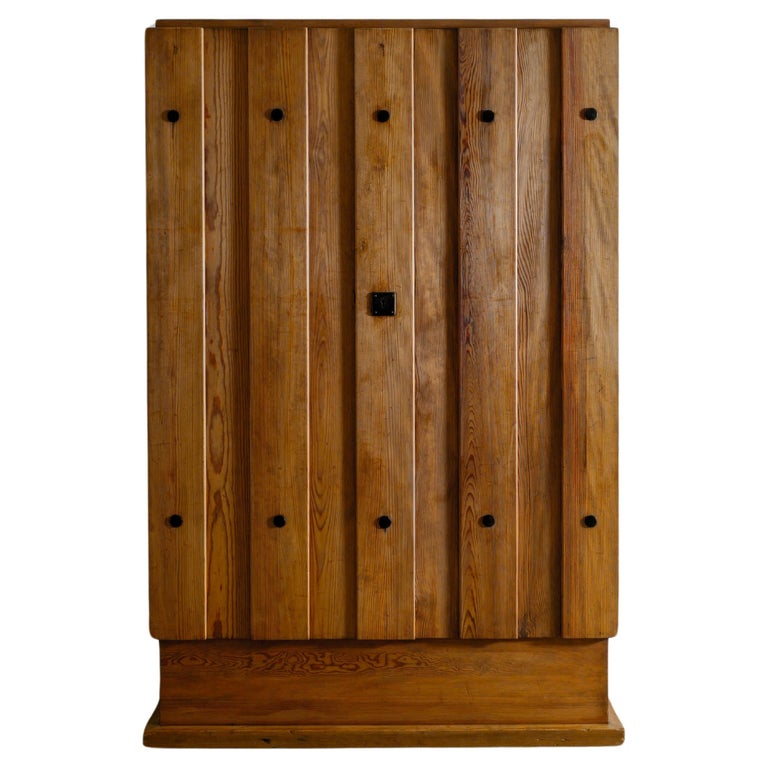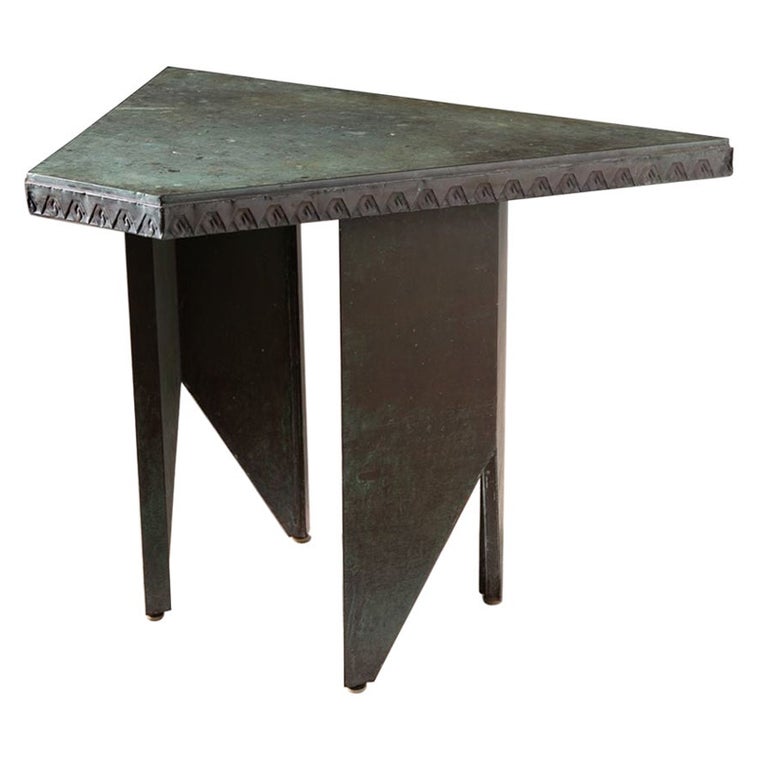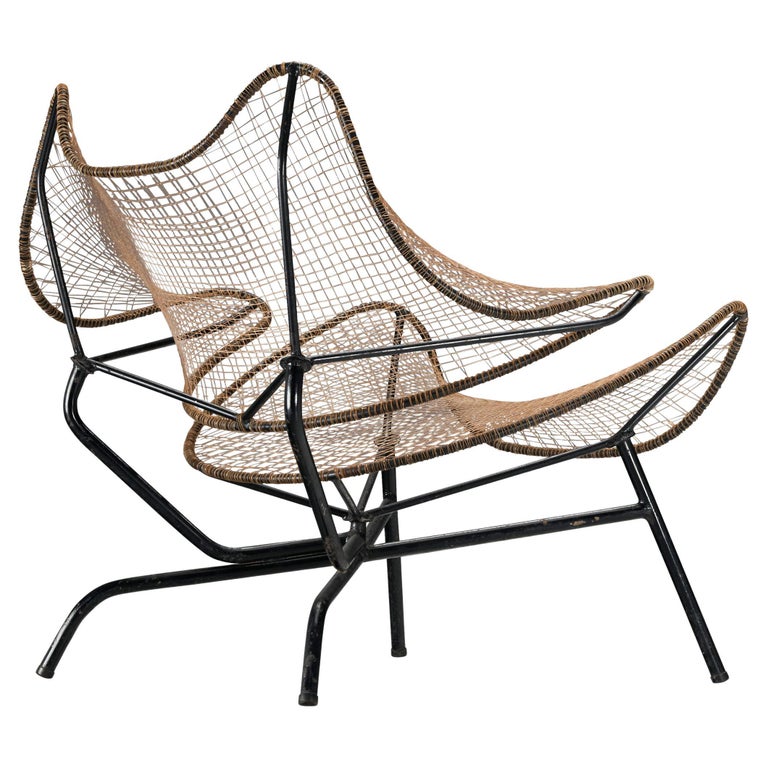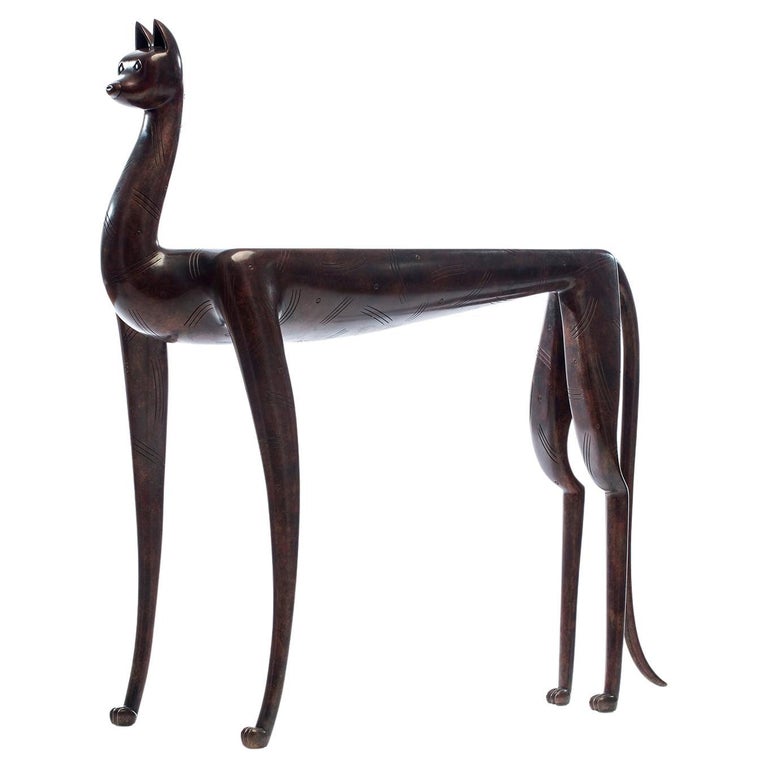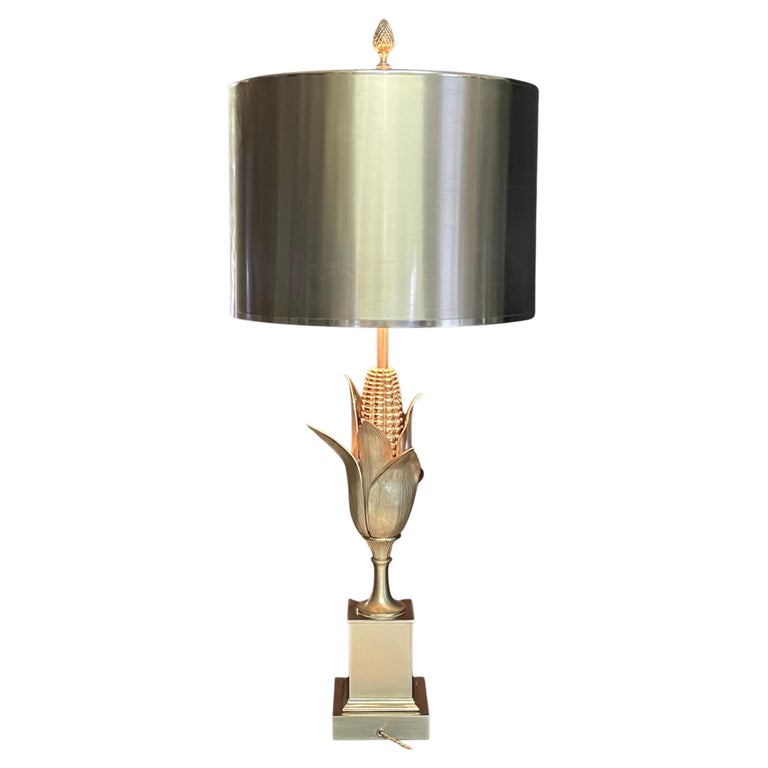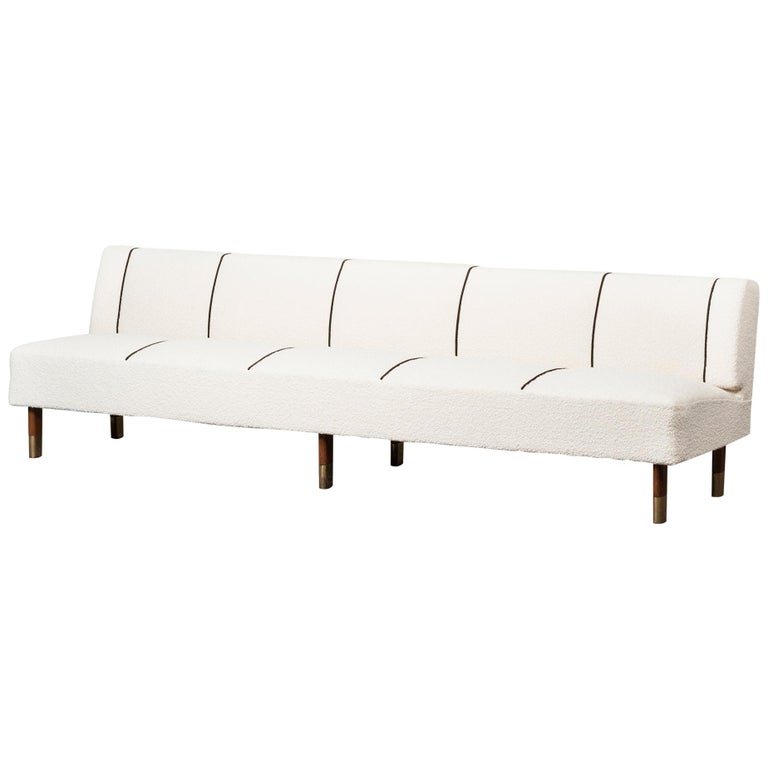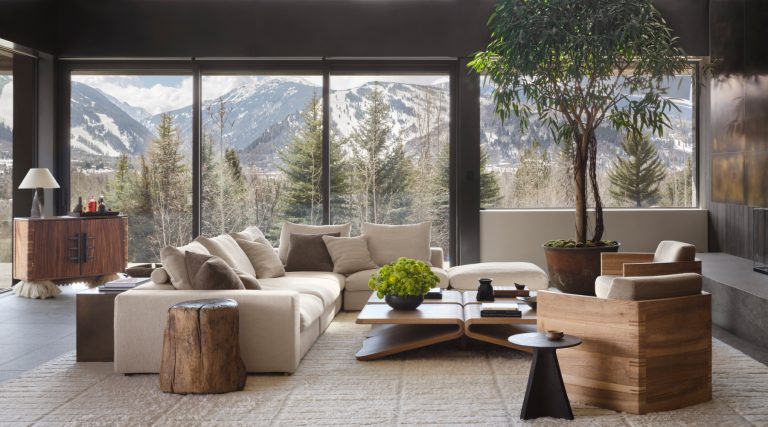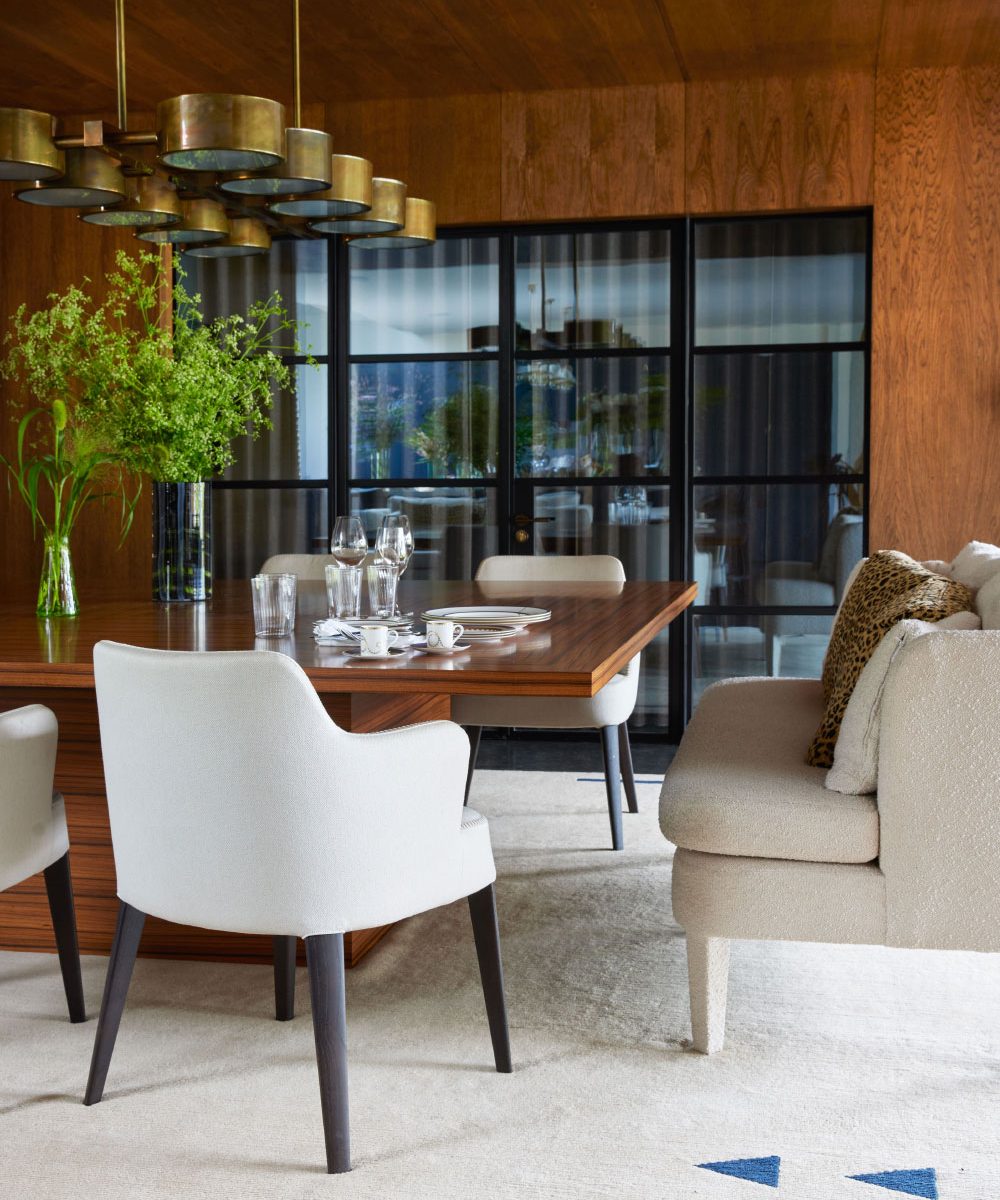July 20, 2025There is not one boring corner in this new-build Brooklyn house. Every glance turns up a bravura architectural move, like the sculpted railings of the show-stopping staircase, modeled after the limestone balustrades of Italy, or such elevated details as baseboards of rust-colored marble and closet doors paneled in Fortuny fabric. Similarly striking are the masterfully curated furniture and lighting, a dynamic mix of custom, contemporary and vintage pieces in joyful juxtaposition.

“Our interiors are a collection of our favorite pieces in tune with the personal style of our clients,” says Eli Dweck, the 1stDibs 50 designer behind this home, which sits near the waterfront in South Brooklyn’s Gravesend neighborhood.
“We don’t use filler pieces,” he continues. “Every object in a house must pass a simple test: Do we love it, and is it something the client loves, both individually and as part of a whole? This approach ensures a space where every piece feels intentional and connected.”
In this case, Dweck’s clients — parents of five who nevertheless prioritize gracious entertaining — provided some general direction. They wanted “warm tones, fresh woods, a youthful feel,” says the designer, who was involved in the project when it was still a vacant lot.
His six-person office got to work on the interior layout and details, including doors, moldings, ceilings and floors, even before architecture studio Ike Kligerman Barkley’s plans for the brick exterior, inspired by 1920s German design, were complete. (The project was completed by the firm Tom Kligerman established after he and his former partner, John Ike, split amicably to go their separate ways.)
“The homeowners had a certain vibe they were looking to achieve. They wanted whimsy, but serious whimsy,” says Dweck. And with that directive in hand, he and Zach Bozman, a senior designer at his firm, were off to the races.
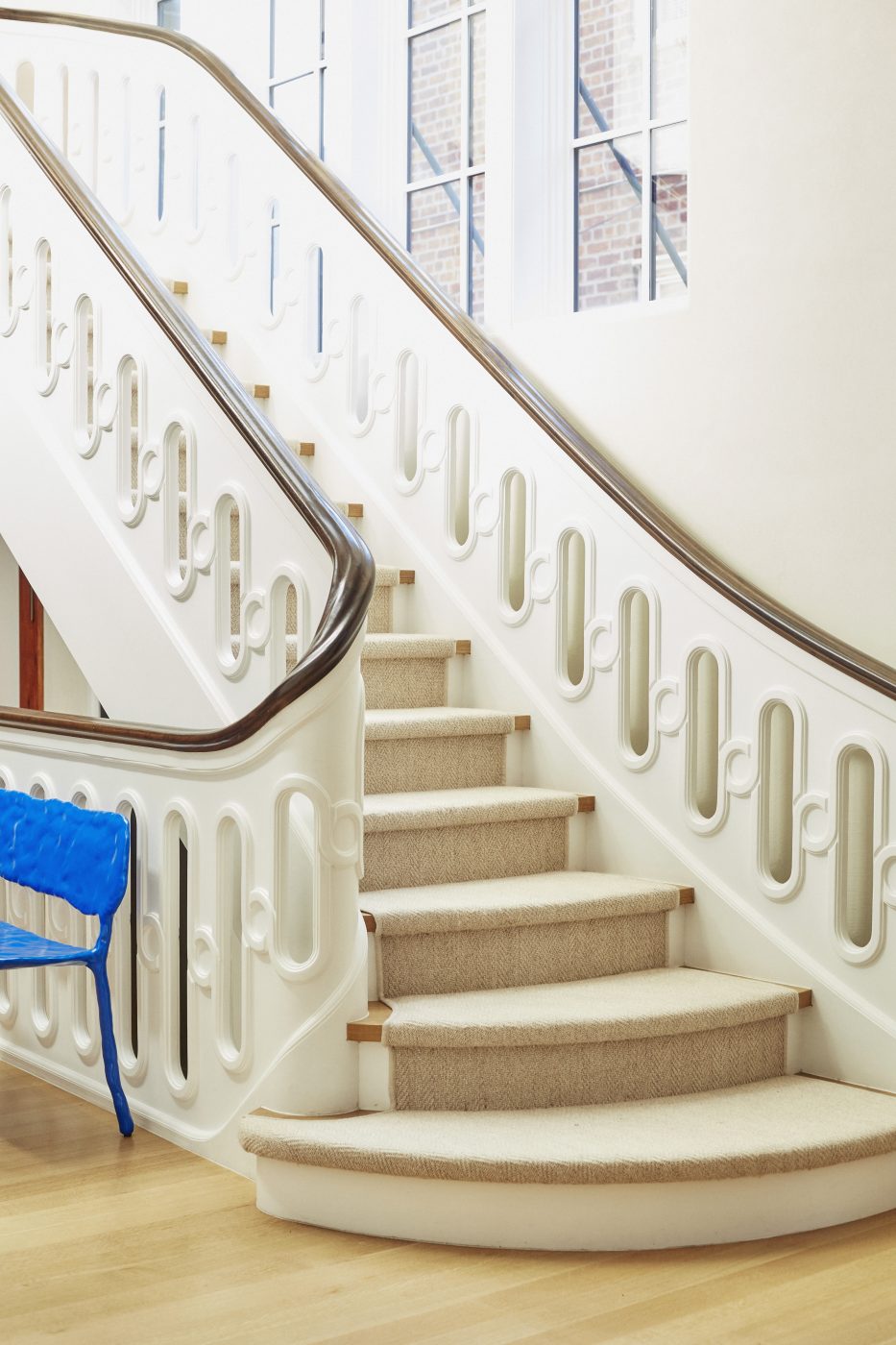
Throughout the 8,000-square-foot home, the furnishings follow a winning formula: purpose-built millwork designed by Dweck’s office combined with meticulously sourced vintage material and a few carefully considered contemporary pieces. “All our projects are custom,” Bozman says. “Vintage is always very important, and contemporary makes it all feel fresh.”
Under the ivory-colored living room’s 11-foot ceilings, a dramatically elongated sofa looks relatively conservative compared with such nearby pieces as British artist Julian Mayor’s faceted metallic Glenda chair and a pair of curvaceous, chicly casual Maurizio Tempestini wooden armchairs from the 1940s. The room’s playful demeanor is clinched by a Beauvais rug adorned with stylized tigers.
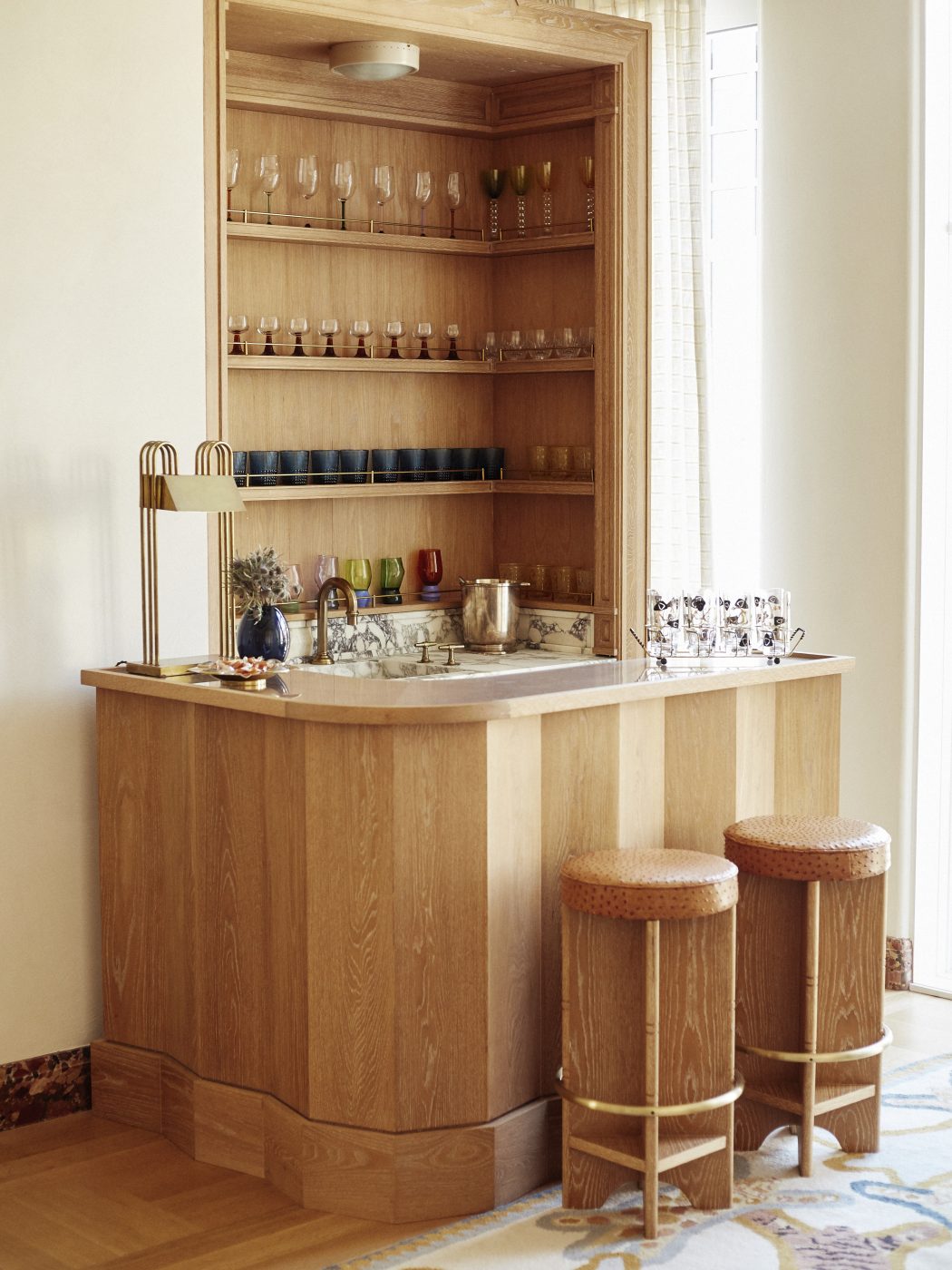
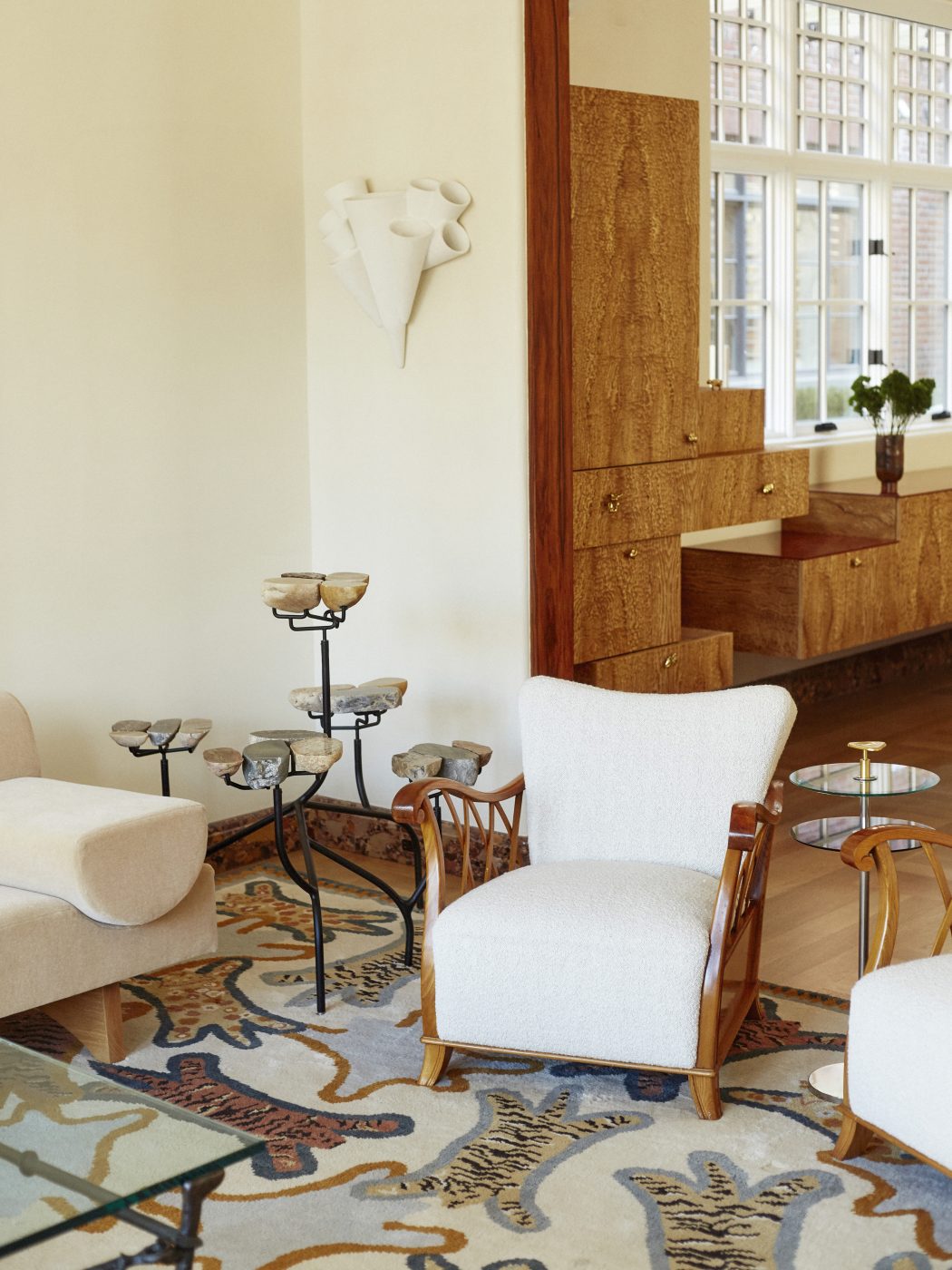
RobertO Giulio Rida side table from Donzella, while in the corner is a table by Chen Chen and Kai Williams that incorporates found stones.
The eclectic dining area, meanwhile, commands attention with a honey-toned wall unit that Dweck calls a “contemporary take on Memphis,” reinterpreted by his office in a rare Japanese ash burl wood. “It has the appearance of plywood but with a more luxurious finish,” Bozman says.
The dining table — whose nickel-rimmed top of crushed eggshells set in hunter green lacquer is based on an Art Deco technique called “craquelure” — takes inspiration from the work of early-20th-century French designer Jean-Michel Frank. Surrounded by chairs found in London, with stitched leather detail à la Jacques Adnet, the oversized table seats 18, “and that’s without the leaves,” Bozman says. A pair of gilded bronze lanterns from Mathieu Lusterie, a French maker, reimagine a historic design as old as Versailles.
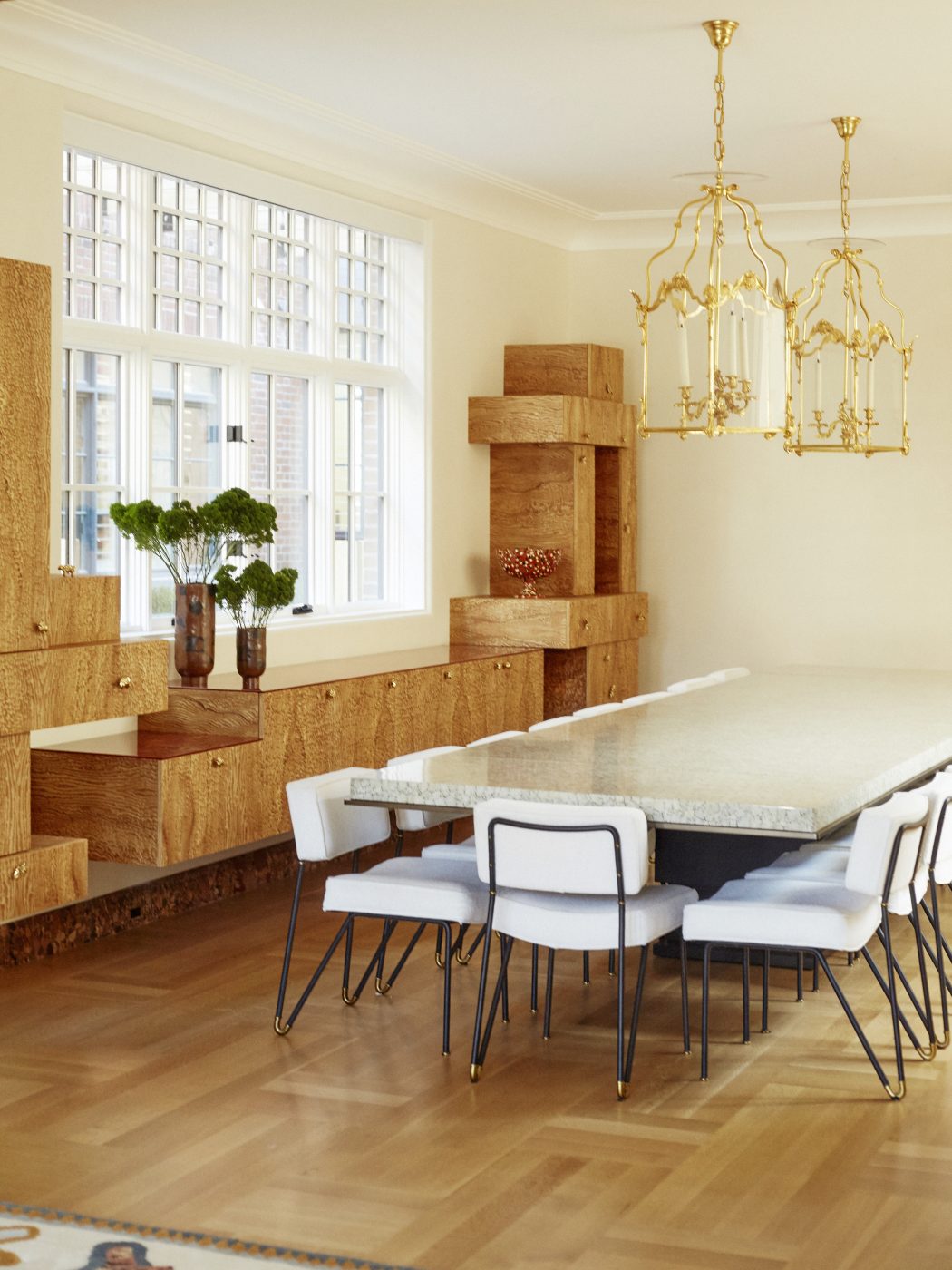
The cozy den is another masterwork of collected-looking decorating — and, fully paneled in amber-colored white oak, it’s also a tonal departure from the rest of the house. “We worked very closely with the plasterer to achieve beautifully textured walls throughout the house, but we wanted this one room to be different,” Dweck says of the decision to clad the room in wood. The flooring — wood tiles laid in a brick pattern to more seamlessly flow through wide glass doors into the adjacent paved courtyard — is unique to the space as well.
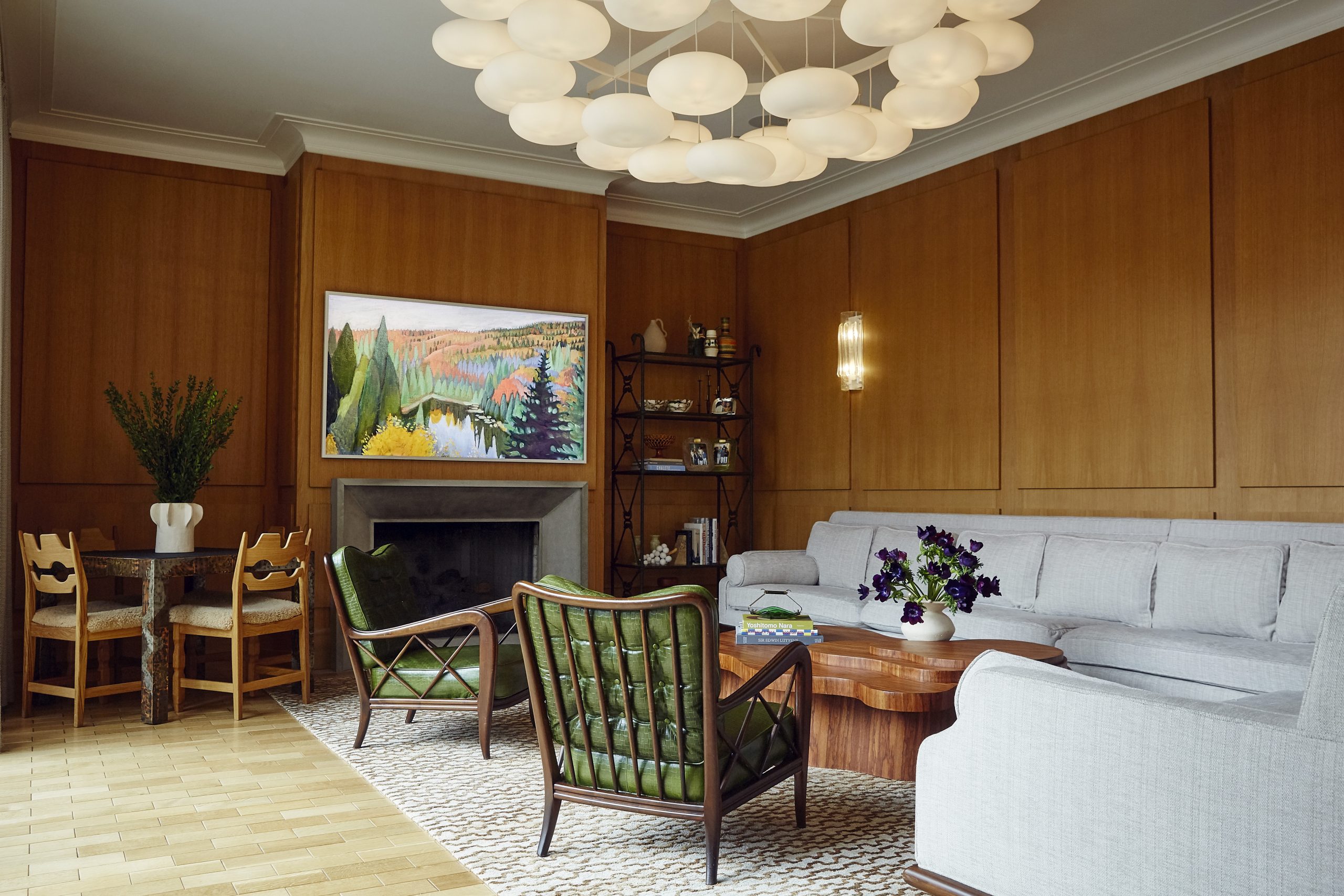
Out-of-the-ordinary furnishings are mostly 1stDibs finds, including mid-century Paolo Buffa chairs upholstered in olive-green leather and a Paul Evans Brutalist games table paired unexpectedly with 1940s Swedish wooden chairs. Presiding over it all: a contemporary Austrian chandelier eight feet across, with clustered glass globes Dweck describes as “hamburger-shaped.”
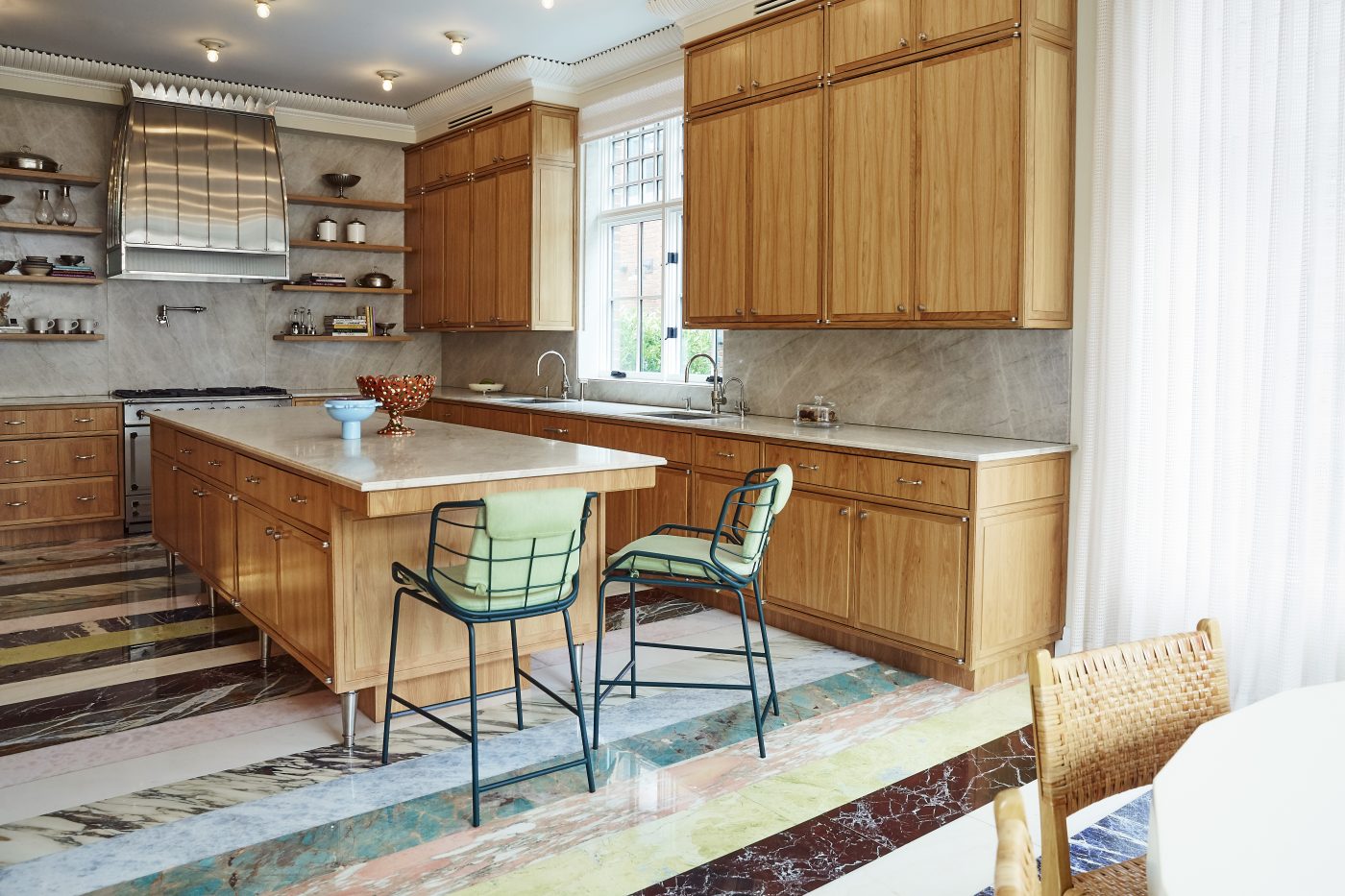
Lavish attention to detail and bespoke touches are no less evident in the kitchen, which contains some of the project’s best examples of whimsy in action. The multicolored striped marble floor was as much fun to create as to look at, Dweck says. He and Bozman took their clients to a stoneyard, where they were all smitten by the variety of candy-colored slabs. “We laid out all the samples we had collected,” Bozman recalls. “There were twelve or thirteen of them. It was so hard to choose among them, we decided, ‘Let’s use them all!’ ”
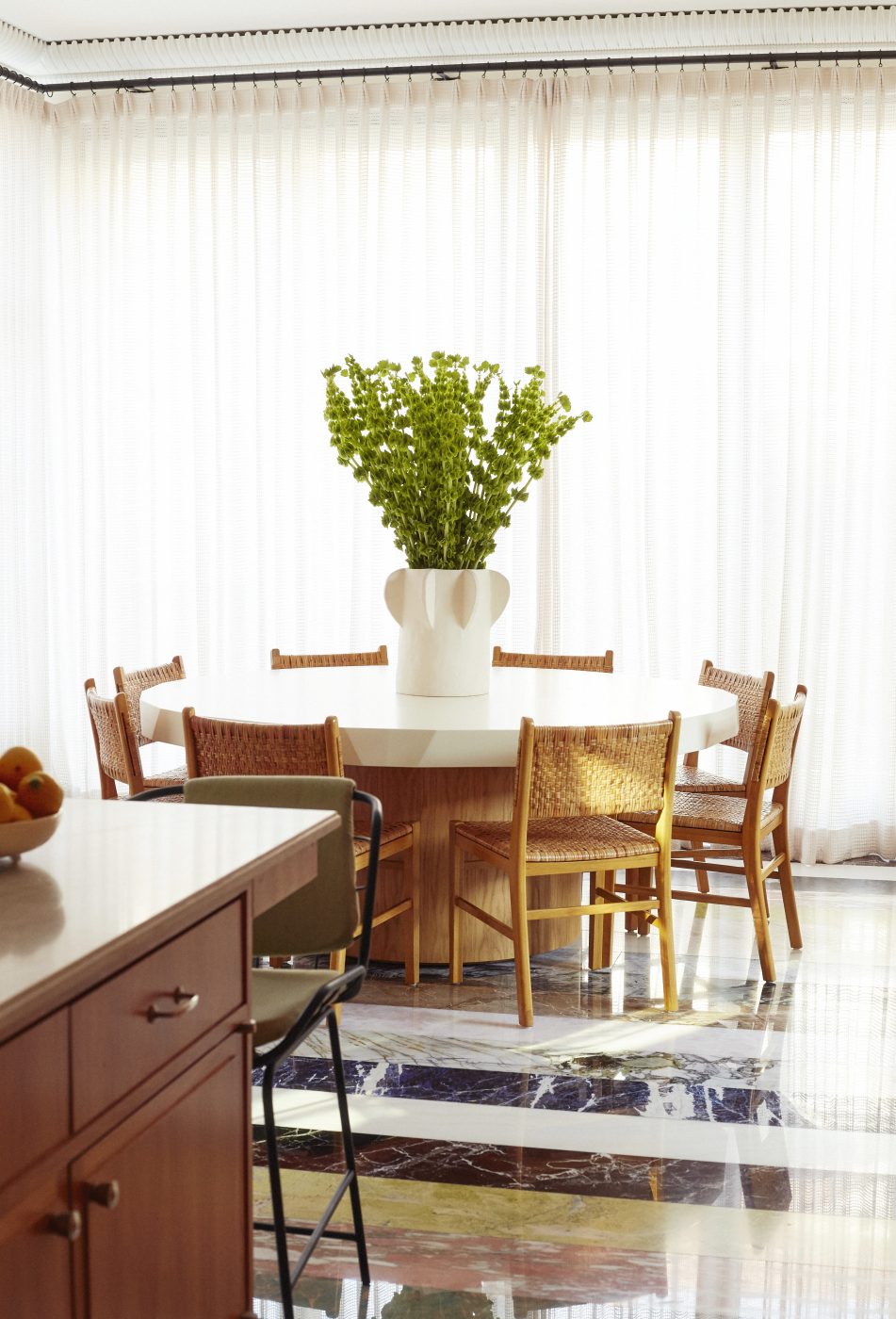
Equally artful are the crown-like leaf motifs that bedeck the top of the brushed and polished stainless-steel stove hood, which are echoed in the elongated scallop shapes of the crown molding and even the silhouette of the center island’s petite legs.
Dweck had the custom cabinetry finished with painstakingly bookmatched veneers of butternut, an unusual wood. “One of the challenges was finding enough material,” Dweck says, noting that all the veneers in the kitchen come from a single butternut tree.
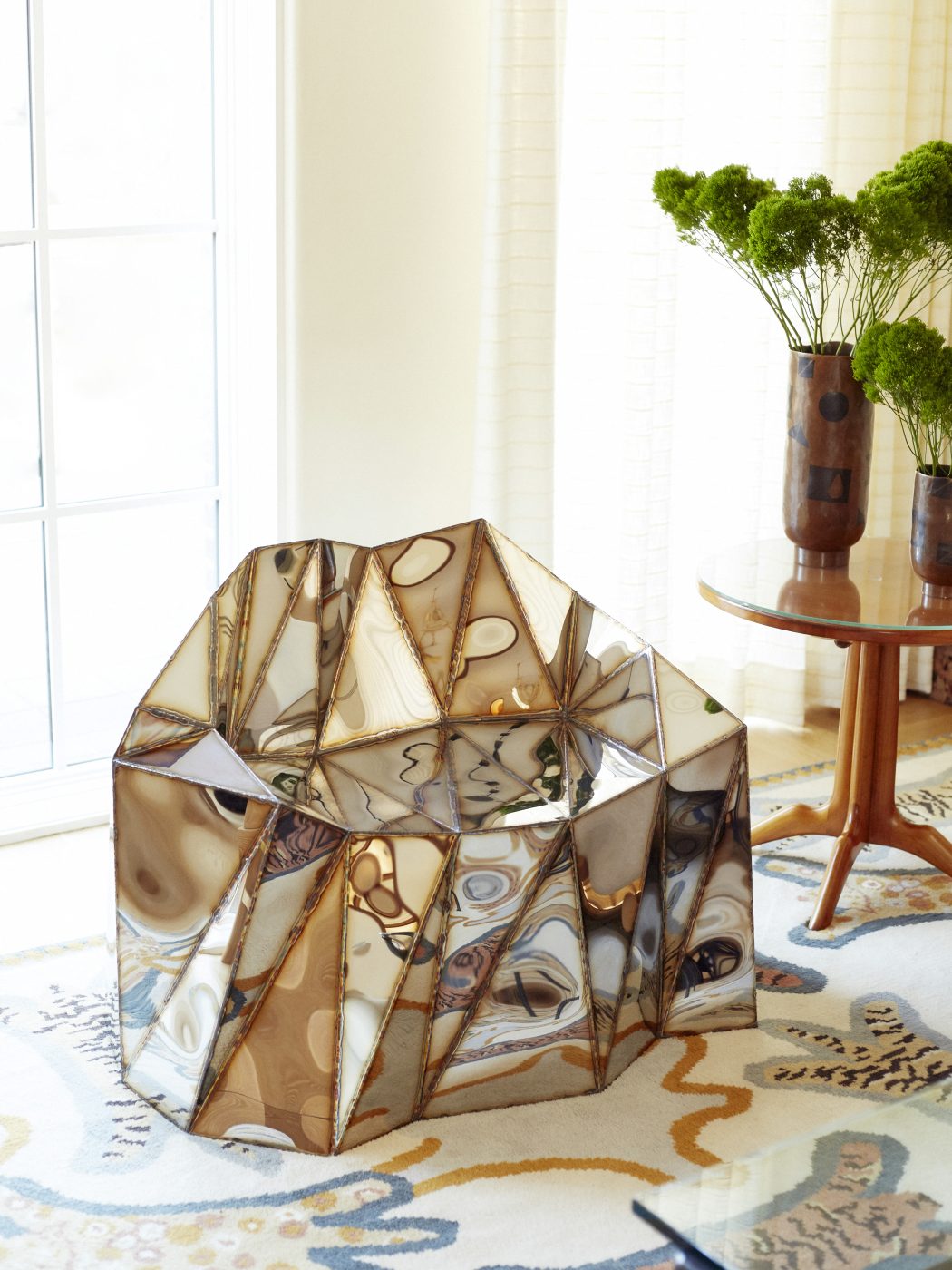
Dweck, a native New Yorker who lives in Brooklyn with his wife and four children, is self-taught as a designer. “I traveled extensively in Europe and was inspired by everything I saw and every place I went,” he says. “I started doing small projects, and it turned into something larger.”
Fast-forward two decades, and Eli Dweck Designs now specializes in luxury homes, from high-rise Manhattan apartments to ground-up townhouses and estates in Florida and coastal New Jersey.
Before Dweck became an enthusiastic 1stDibs shopper, he traveled often to Paris, for the flea markets, and elsewhere in Europe to source furniture, lighting and accessories. “I do miss that time in history,” he says. “But 1stDibs makes it so easy, with a vast number of vendors from all over the world.”
Whether he’s shopping online or in person, Dweck’s philosophy is the same. “As a design firm, we love to collect great things that make a space feel exceptional. If you take any ten items that embody quality design, a room will always come together beautifully.”
